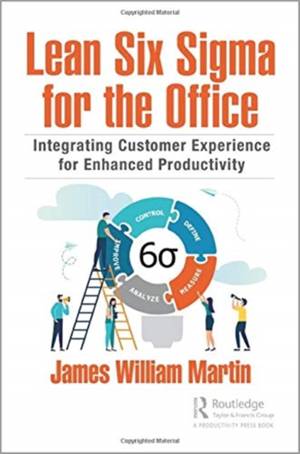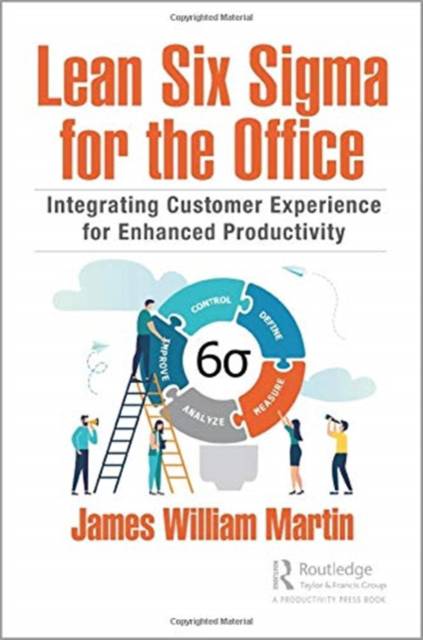
Vous voulez être sûr que vos cadeaux seront sous le sapin de Noël à temps? Nos magasins vous accueillent à bras ouverts. La plupart de nos magasins sont ouverts également les dimanches, vous pouvez vérifier les heures d'ouvertures sur notre site.
- Retrait gratuit dans votre magasin Club
- 7.000.000 titres dans notre catalogue
- Payer en toute sécurité
- Toujours un magasin près de chez vous
Vous voulez être sûr que vos cadeaux seront sous le sapin de Noël à temps? Nos magasins vous accueillent à bras ouverts. La plupart de nos magasins sont ouverts également les dimanches, vous pouvez vérifier les heures d'ouvertures sur notre site.
- Retrait gratuit dans votre magasin Club
- 7.000.0000 titres dans notre catalogue
- Payer en toute sécurité
- Toujours un magasin près de chez vous
Lean Six Sigma for the Office
Integrating Customer Experience for Enhanced Productivity
James William Martin
Livre relié | Anglais
67,95 €
+ 135 points
Format
Description
Historically, the integration of manufacturing methodologies into the office environment has proven to be problematic. Part of the difficulty lies in the fact that process workflows tend to be globally dispersed and thus rely heavily on information technology. But in complex service systems that contain a mix of employees, consultants, and technology, standardized protocols have been shown to reduce cycle time and transactional cost as well as improve quality. The successful application of Lean methodologies to improve process workflows is an efficient way to simplify operations and prevent mistakes. In Lean Six Sigma for the Office, Six Sigma guru James Martin presents proven modifications that can be deployed in offices, particularly those offices involved with global operations. Making use of Kaizen and Six Sigma concepts, along with Lean manufacturing principles, this book instructs managers on how they can improve operational efficiency and increase customer satisfaction. The author brings experience gleaned from his application of these methodologies in a myriad of industries to create a practical and hands-on reference for the office environment. Using a detailed sequence of activities, including over 140 figures and tables as well as checklists and evaluation tools, he demonstrates how to realize the rapid improvement of office operations, and how to eliminate unnecessary tasks through value stream mapping (VSM). The book also emphasizes the importance of strategic alignment of Kaizen events and the impact of organizational culture on process improvement activities. Latter chapters in the book discuss key elements of a change model in the context of transitional improvements as they relate to the process owner and local work team. By applying the proven principles found in this book, effective and sustainable organizational change can be accomplished, efficiency can be improved, and mistakes can be eliminated. This 2nd edition provides insight into the new tools and methods Lean Six Sigma process improvement professionals need to improve customer experience and increase productivity within high transaction processes across complex information technology ecosystems. It is one-stop self-contained reference for the application of Lean Six Sigma methods enhanced by powerful approaches for process improvement in highly complex service processes. Several new leading-edge topics are integrated into this new edition, such as: - The "voice of" customers, suppliers, employees and partners - Design Thinking Alignment - Ecosystems in Information Technology - Metadata Definition and Lineage - Information Quality Governance - Big Data Collection and Analytics - Mapping High Volume Transactions through Systems - Robotic Process Automation Applications - Automating for Solution Sustainability - Governing Organizations - Data Privacy (General Data Protection Regulation)
Spécifications
Parties prenantes
- Auteur(s) :
- Editeur:
Contenu
- Nombre de pages :
- 344
- Langue:
- Anglais
Caractéristiques
- EAN:
- 9780367503277
- Date de parution :
- 23-03-21
- Format:
- Livre relié
- Format numérique:
- Genaaid
- Dimensions :
- 152 mm x 231 mm
- Poids :
- 612 g







